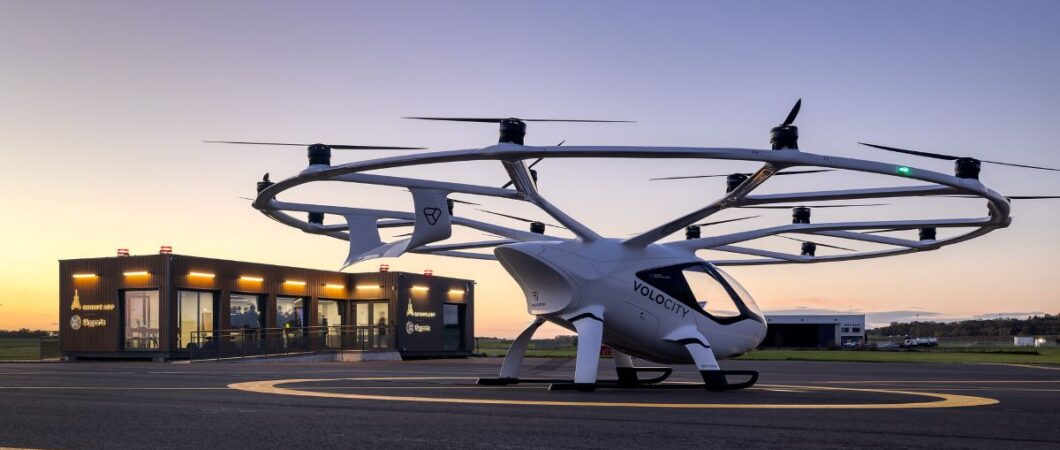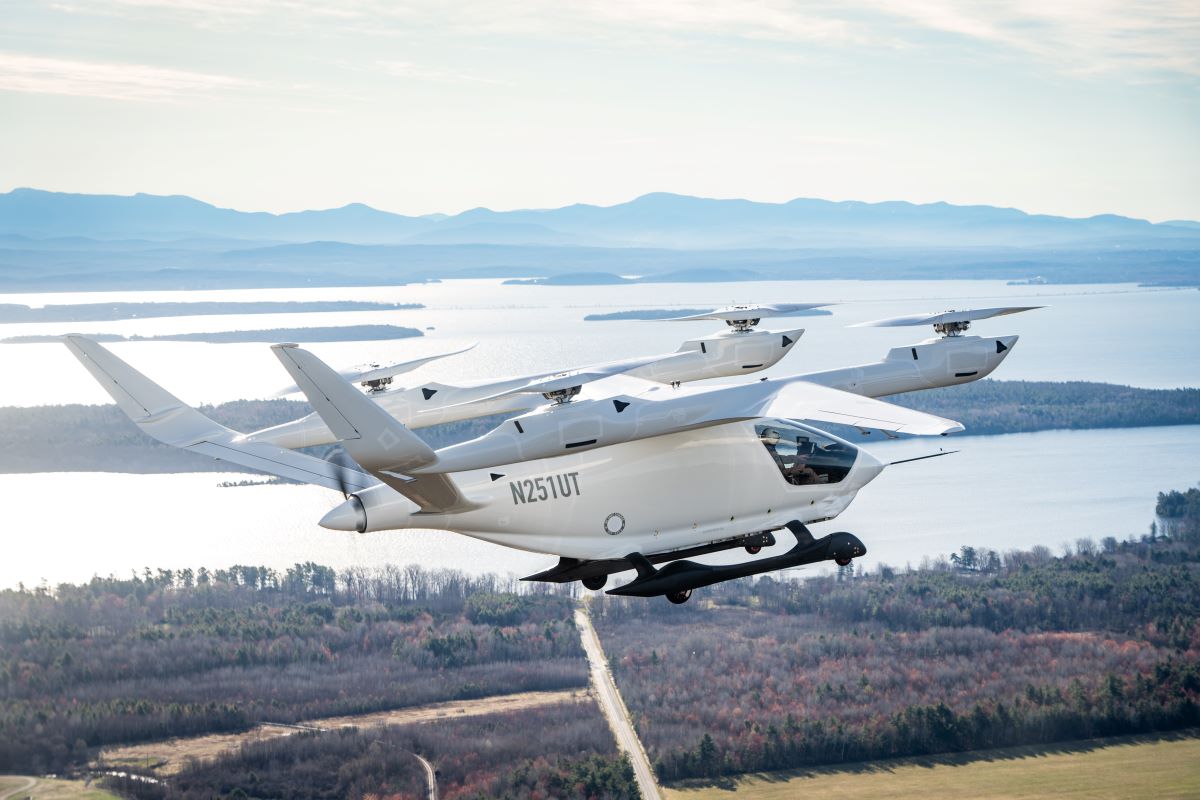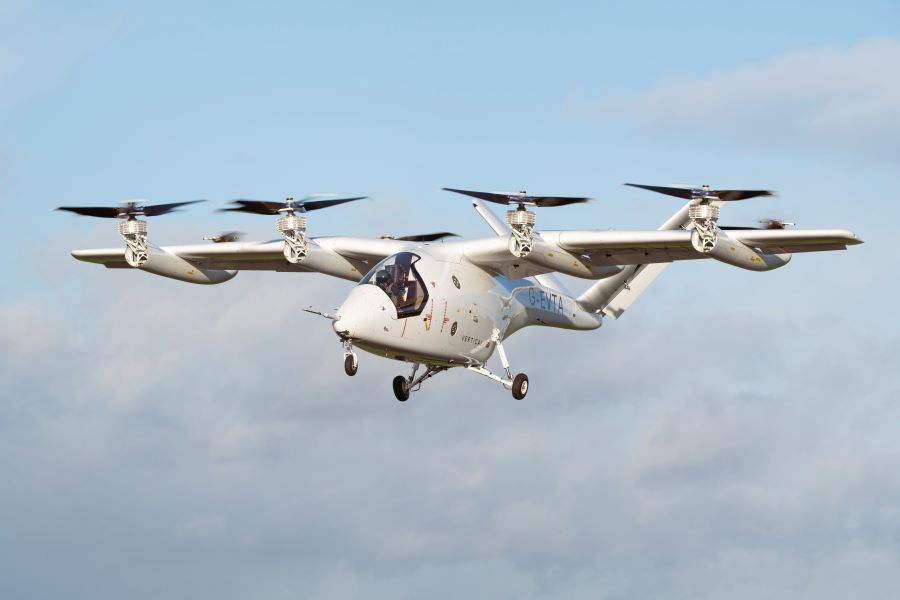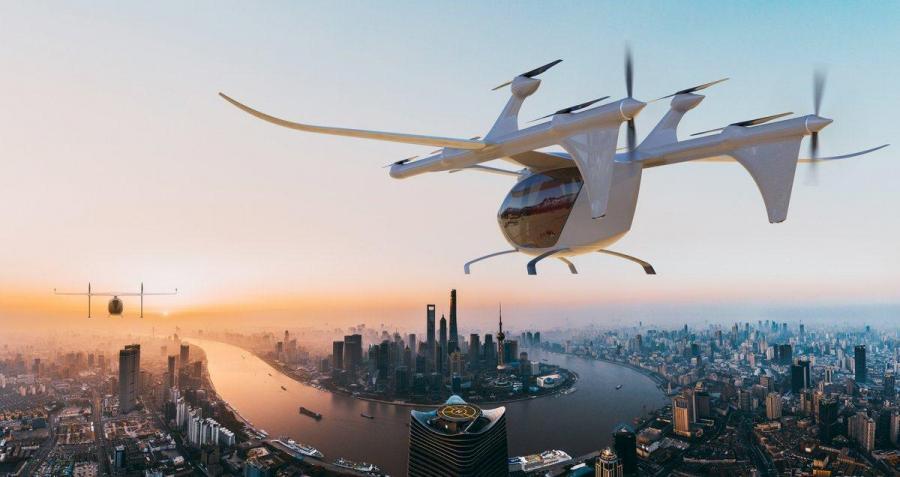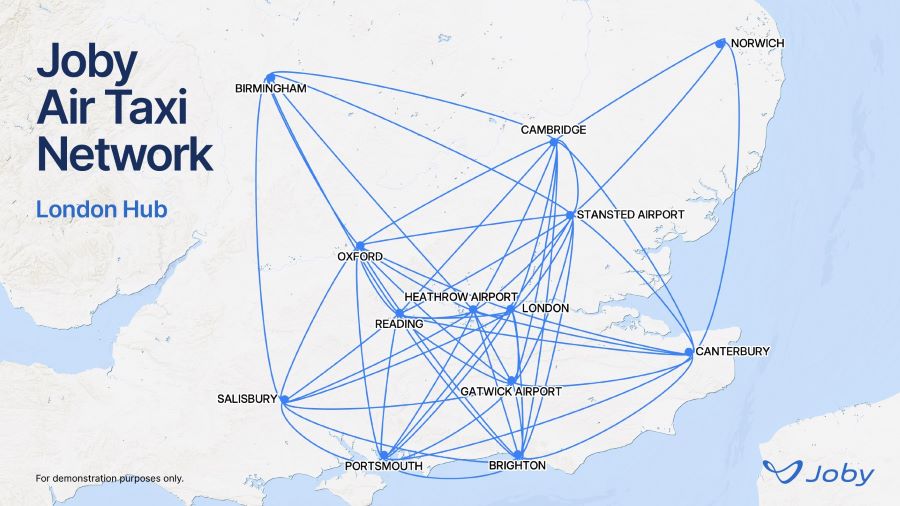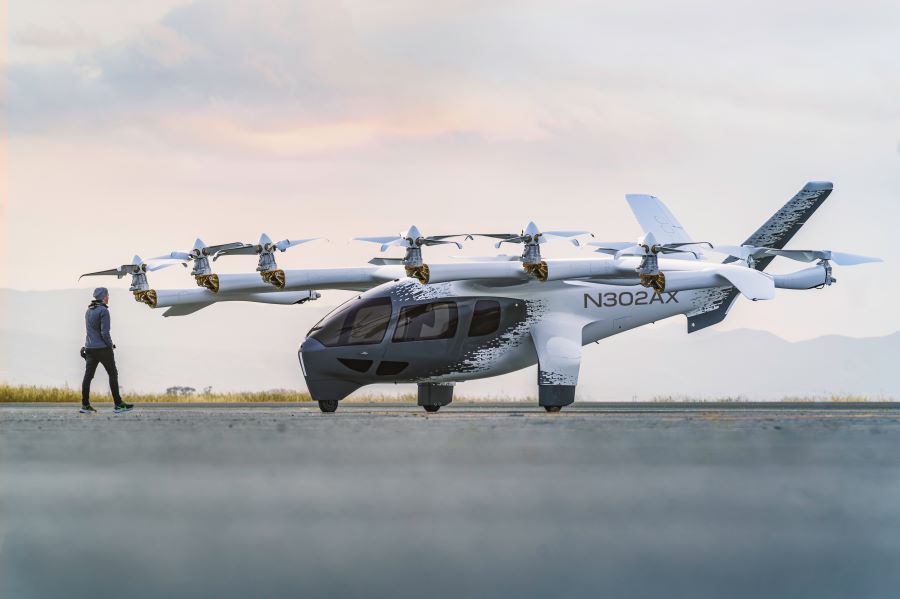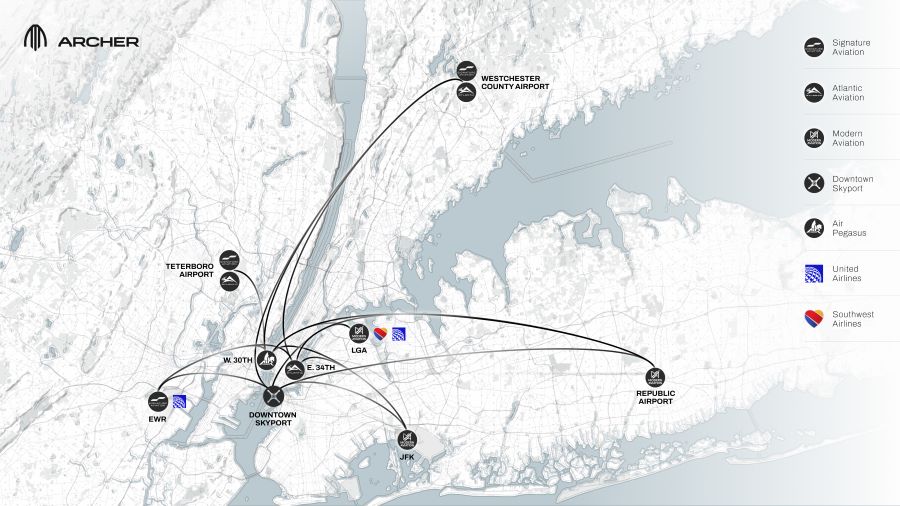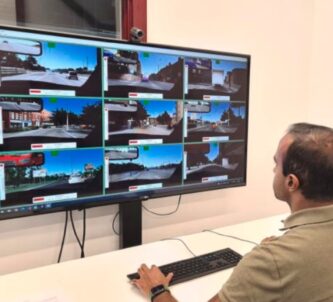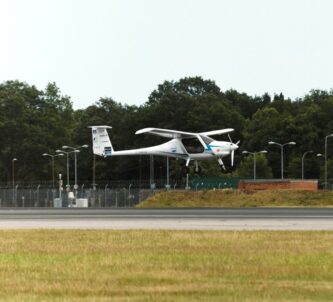We are supposedly on the brink of an aviation revolution and the general public have little idea what’s about to happen.
The moment is soon coming when the aviation technologies that many people are vaguely aware off, actually transition into the real thing. When people see an electric Vertical Take-Off and Landing (eVTOL) air taxi or cargo drone in the sky above them for the first time… THAT is the moment when this new aviation industry will… well, ‘take-off’, but probably in limited numbers.
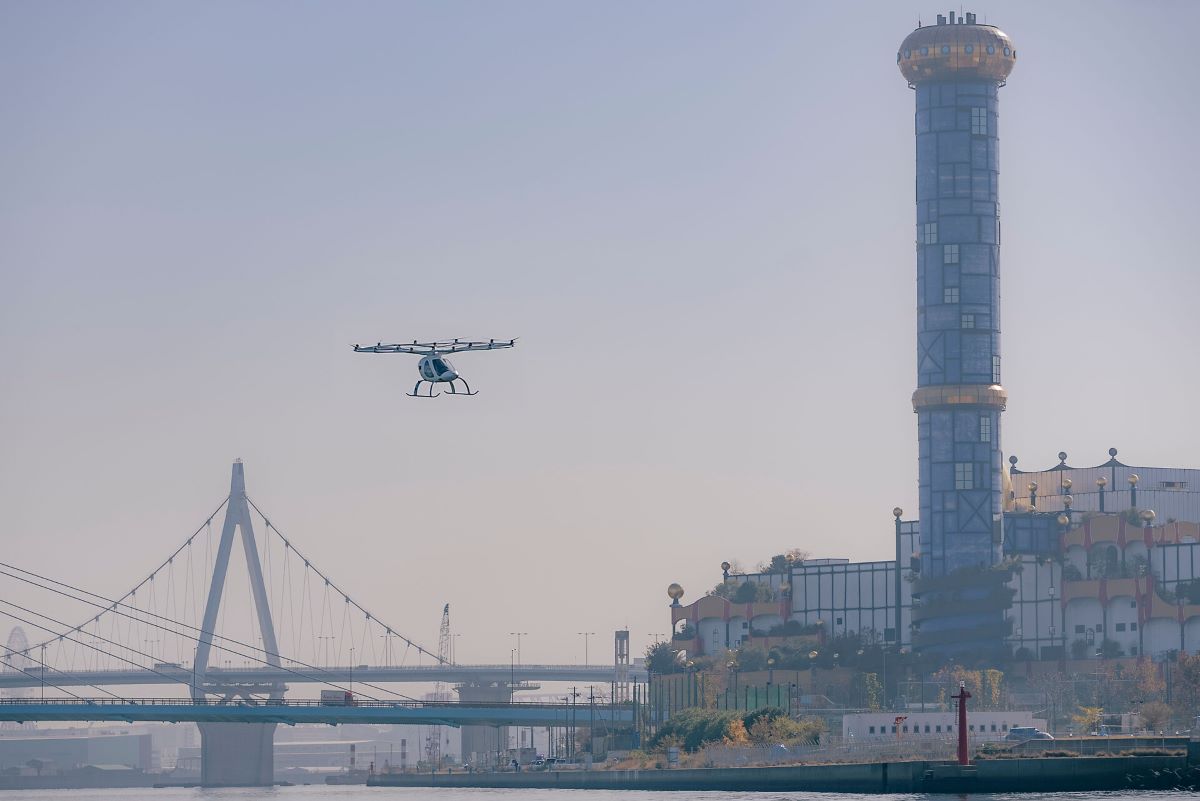
All indications are, that those first sightings of eVTOLs on commercial flights could even start this or next year.
In fact, we missed seeing them last summer in Paris. Volocopter had secured the necessary permissions to fly their Volocity urban aerial taxi carrying officials and competitors over the city centre during the Olympics, but in the end had to cancel their plans.
What is Advanced Air Mobility (AAM)?
Well, it’s not just new aircraft designs. It’s about the new systems they will fly in:
- How they will be integrated with traditional Air Traffic Control.
- What will be the designs and regulations for the new generation of “vertiports” that they will use.
- What new licensing and insurance regimes they will need.
BAE Systems have defined it more efficiently than me…
“Advanced Air Mobility (AAM) is an air transport system concept that integrates new, transformational aircraft designs and flight technologies into existing and modified airspace operations. The objective of AAM is to move people and cargo between places more effectively, especially in currently underserved local, regional, urban, and rural environments.”
All this is further complicated by the range of aerial ‘solutions’ that designers are coming up with. There’s been an explosion of technical capabilities in recent years and no two vehicles are quite the same. Some are autonomous (UAVs – Unmanned Aerial Vehicles), some piloted, or both. Some are designed for cargo, some for passengers, or both. Some fly by rotors, some fly by a combination of wings and rotors. Some are powered by conventional fuels, but most are electric or hybrid, using batteries, solar, hydrogen fuel cells, or even combustible hydrogen.
eVTOLs may represent the ‘mainstream’, like MightyFly‘s autonomous cargo drone, which was granted an FAA Flight Corridor last year to start A-to-B flight testing, but there are other vehicles operating at the edge of the AAM market. For example, the traditional combustion engine powered autonomous cargo drones that were being trialled by the Post Office in 2021.
Many of us tend to visualise multi-rotor air taxis when we talk about AAM, like the Volocopter mentioned above OR the Autoflight V1500M, OR the American developer Supernal‘s SA-2 OR Bristol-based Vertical Aerospace‘s VX4* OR BETA Technologies‘ ALIA A250
OR there’s the Lilium eVTOL “jet” (I think I’d call it “ducted-fan”)
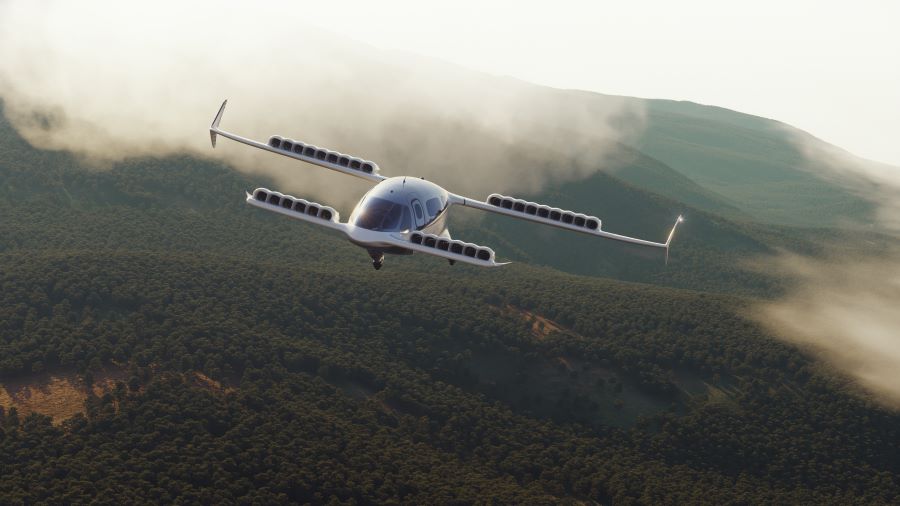
And there are even more revolutionary (sic) designs.
The Austrian aerotech company, Cyclotech had a successful maiden flight with its Blackbird demonstrator last month, using its 360° thrust vectoring barrel rotors, that they call “CycloRotors”. The Blackbird is a small scale prototype for their Cruiseup eVTOL.
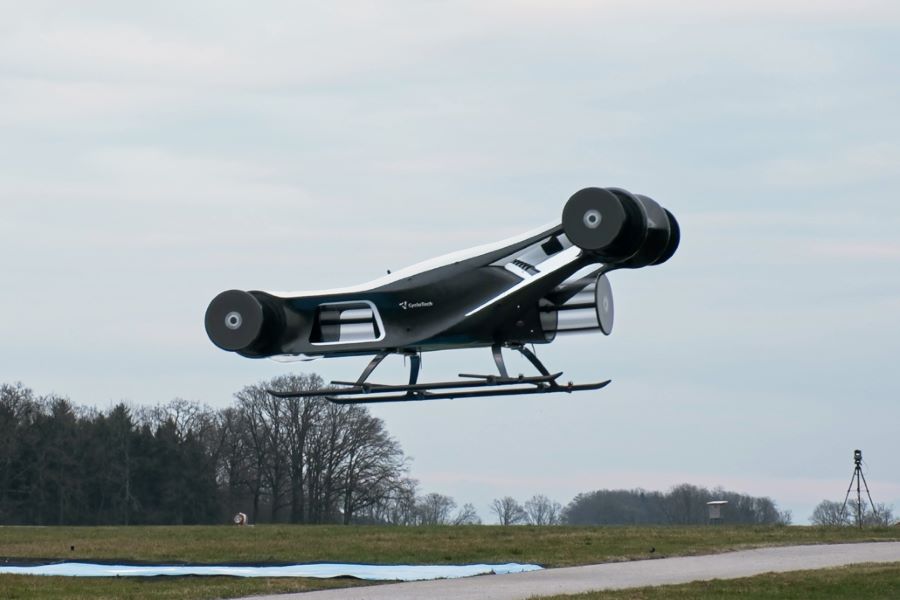
It’s hard to see how this propulsion works, but as the barrel rotates at a fixed speed its aerofoil blades get individually deflected at a certain point in their rotation by a system rather like a helicopter’s swashplate, directing the airflow outward. The configuration of six CycloRotors enables it to precisely control its movement in any axis, and rotate. You can play with it in this simulator (Hint: press the power button to start).
Meanwhile, aerospace giant, Airbus is working on a super funky design…
Airspace for Advanced Air Mobility
Airspace is suddenly going to become more contested. How is that going to work? We think it is congested NOW!
Well, AAM is all about fitting the new generation of aircraft – mostly eVTOLS – into the existing air traffic systems.
Firstly we’ll need to focus on Unmanned Traffic Management (UTM) systems that can handle the flow of lower-altitude air traffic, particularly for drones and eVTOLs, without overwhelming traditional Air Traffic Control (ATC). These UTM systems will manage real-time tracking, flight planning, and conflict resolution, working with, but somewhat independently of, the current ATC system.
We’ll also need to establish new airspace corridors for eVTOLs and drones, mostly low altitude, and particularly in urban areas. And ensure that robust real-time data exchange systems enable ‘Detect and Avoid’ technologies to operate at maximum efficiency.
Where will all these autonomous drones & eVTOLs be coming from and going to?
Vertiport Infrastructure
The development of Vertiports is essential. These will be the locations where eVTOL’s will take off and land. They are being planned to be built on top of existing buildings, and in other urban locations, to provide easy access for the public.
Designs for vertiports tend to be very similar and various groups are already building and testing them.
In Paris, permission was already granted to build the Vertiport de Paris-Austerlitz on the bank of the Seine for VTOLs, ie. eVTOLS and traditional helicopters. The company behind it, Groupe ADP (Aéroports de Paris), operates the three main Paris airports Paris-Charles de Gaulle, Paris-Orly and Paris-Le Bourget, as well as some ten civil aviation aerodromes in the Paris region, so they had already developed four vertiports around the city (See feature image).
Here in the UK our likely-to-be first vertiport is being developed by Skyports at Bicester Motion, Oxfordshire. The 444-acre estate, based on the old Bicester aerodrome, is essentially a campus of businesses driving the past, present and future of automotive and aviation technology. Last December they broke ground on a compact 160 sq metre passenger terminal for their vertiport operations.
UPDATE (12/06/2025): Skyports have completed their vertiport at Bicester. It is now operational and just needs some eVTOLs!
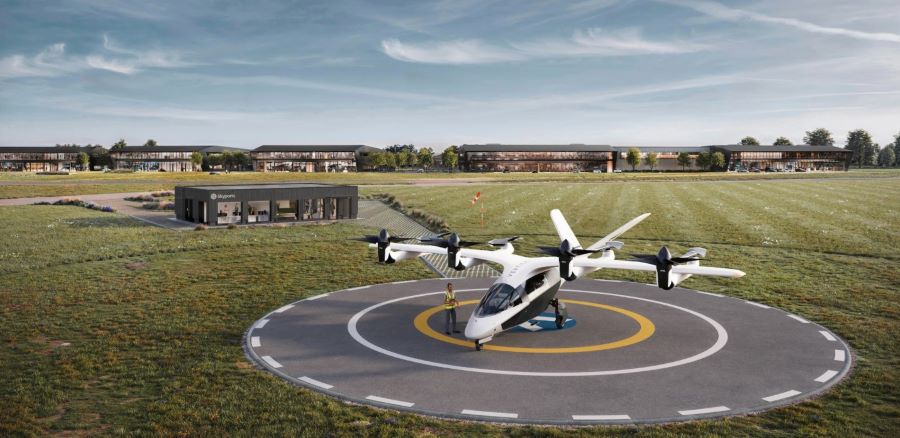
But where else? The AAM industry may be talking about the national vertiport infrastructure, but nobody else is. Where are these eVTOLs going to land and take-off? These are discussions that local councils should already be having in public. If I book an Uber air taxi, where am I to meet it? Are my local authorities consulting with the AAM industry to see what advantages a local vertiport might bring to my area? Probably not. Maybe soon, when eVTOLS begin flying overhead, they’ll start thinking about it, but they are not going to be ahead of the pack.
But, let’s not get ahead of ourselves!
I’m predicting that although we will see Advanced Air Mobility aircraft soon, they are likely to remain rare sightings. Why? Because for all the AAM industry buzz there are still one or two problems in the way.
The first problem is fundamental: Is this cutting edge technology being developed, for it own sake? Is this a solution looking for a problem? Who, actually will use an eVTOL air taxi?
Referring back to the ‘almost’ Volocopter flights during the Paris Olympics. Permission to operate was granted by the Transport Ministry, but it was in the face of loud opposition from Green politicians, particularly on the city council, who argued that eVTOL air taxis were simply playthings for the rich and did little to reduce carbon emissions by replacing already dwindling numbers of fossil fuel road vehicles.
Last month (March 2025) Joby Aviation and Virgin Atlantic announced a partnership that will launch Joby’s air taxi service in the UK, offering Virgin Atlantic passengers short range connections to and from their hub airports. Joby’s electric air taxi is designed to carry a pilot and up to four passengers at speeds of up to 200 mph and the partnership means Virgin Atlantic customers will be able to reserve a seat on Joby’s aircraft through Virgin Atlantic’s app, website and other channels.
This week Archer Aviation announced similar plans for a New York City air taxi network using their Midnight eVTOL, in collaboration with United Airlines. They want to provide United passengers with flight routes between NYC’s major airports (JFK, LaGuardia Airport & Newark) with NYC Helipads (East 34th Street Heliport, Downtown Skyport, West 30th Street Heliport) and regional airports (Westchester County Airport, Teterboro Airport, Republic Airport).
That seems to be the typical scenario promoted by most of the eVTOL companies. It does sound like a ‘plaything’ for elite airline customers, and not so much an eco-friendly solution for the masses. And for the time being, won’t the elite continue to use a fossil fuel helicopter to get to the airport from their office in the city, or get home to their estate in Cheshire, or to fly around to their hotel in Monaco from Nice airport (I’ve done it. It’s fun!)? So eVTOLs are not exactly providing a solution to a serious problem of demand.
What about cargo? That’s a more serious application. Well, there’s not a critical need for point-to-point speedy cargo delivery that isn’t already being met by logistics companies on the ground. In time eVTOLs might provide slightly cheaper and more sustainable solutions then traditional helicopters for urgent cargo delivery and air ambulances, but it’s hardly a burning issue.
The second most serious problem is range. Battery technology has become amazingly advanced and efficient in recent years, but it still struggles to cope with the power demands of vertical take-off and landing. There’s a reason so many designs combine a wing & rotor combination. When the majority of power is needed for the start and end of a journey, having a wing provide the lift while cruising is a no-brainer. But even with the wing, few companies are proposing flights of more than 25 miles with as many as 5/6 passengers.
Last September, respected aerospace journalist, Bill Sweetman, wrote a detailed analysis of the problems facing eVTOLS in the Royal Aeronautical Society’s Insight Blog. It raises the ‘purpose’ and ‘range’ issues, and a few others.
So, when will we see the first licensed AAM vehicles over our heads, as opposed to demo/test flights at airports? It may have already happened but I doubt it; if somebody had flown one in my home town (London) the mainstream media would be in a frenzy. I think it’ll almost certainly happen later this year or next, or possibly in 2027.
If you see one, be the first to log it in the comments below!
If you are interested in these new aerial technologies, then see what’s happening in the smaller drone delivery world, and watch Mark Rober’s amazing video (embedded).
* Vertical Aerospace had a minor setback in Aug 2023 when a rotor blade flew apart on a test flight at Cotswold airport and their prototype crashed to the ground from 30ft altitude. Their projected date for certification and entry into service has been adjusted from 2026 to 2028.
Feature image: Not a render. That’s a real photo of Volocopter’s Volocity in front of the Skyports/ADP test Vertiport Terminal at Pontoise-Cormeilles, Paris last year (Photo: ©Volocopter GmbH/Nikolay Kazakov).

